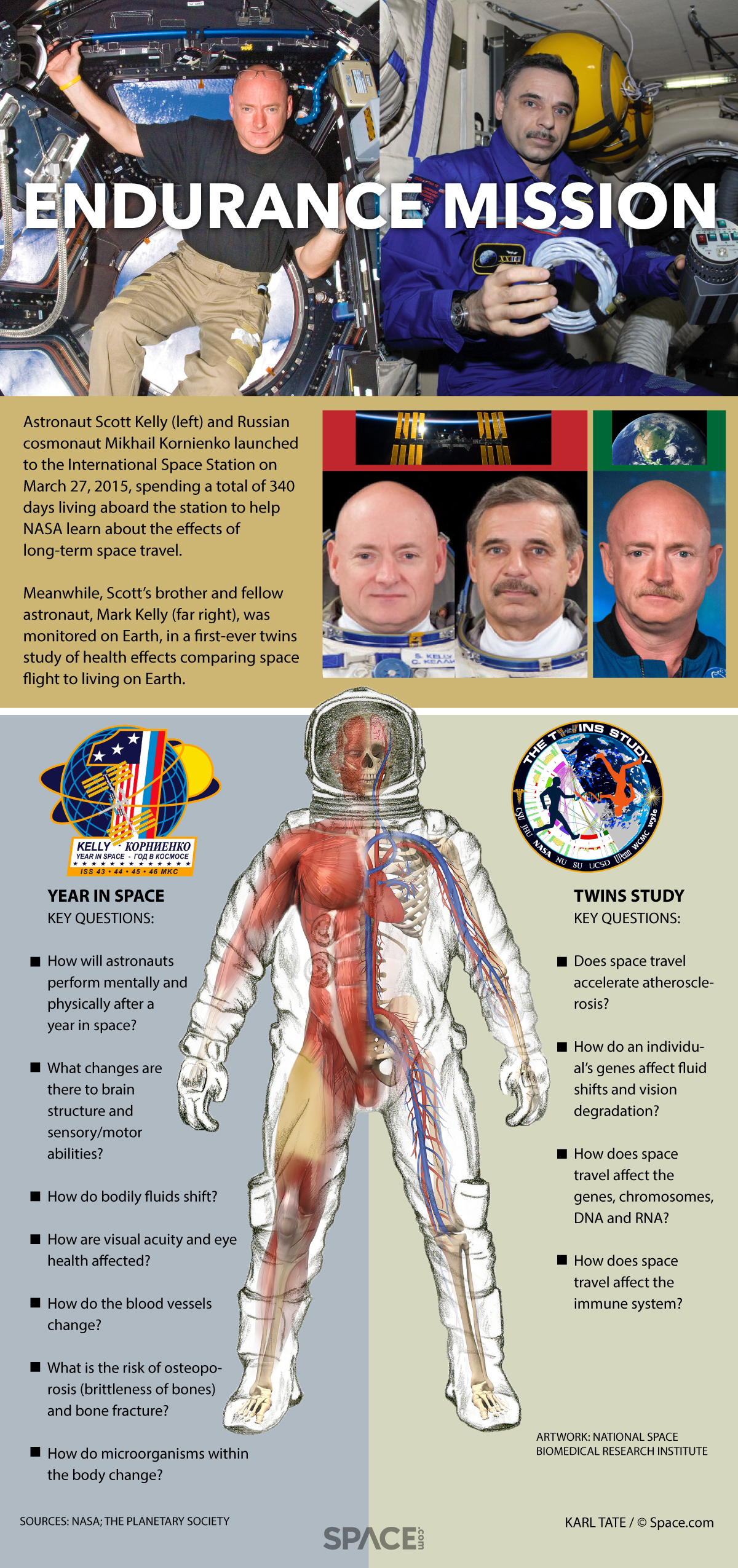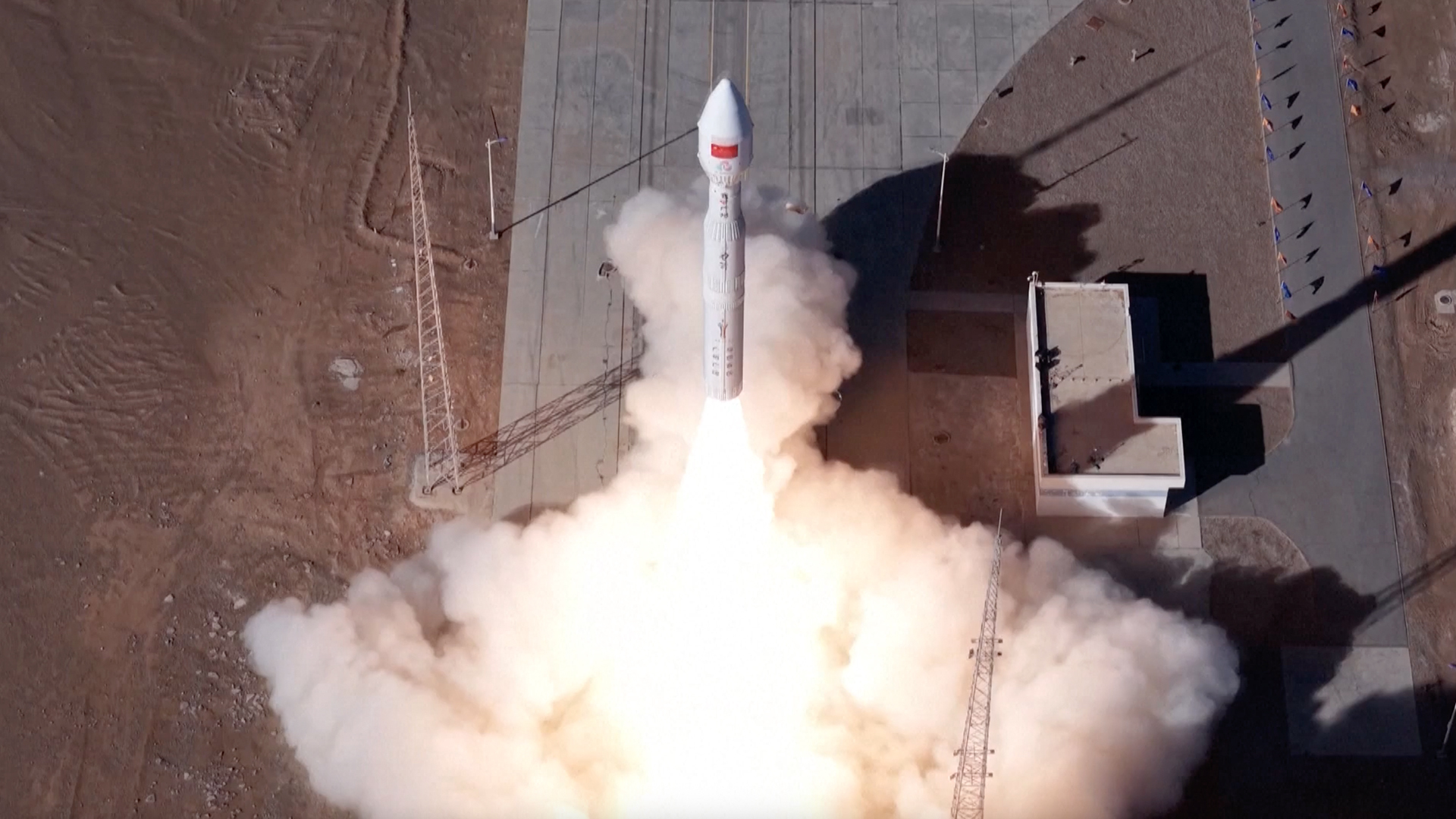NASA Chief: 1-Year Space Station Mission Advances NASA Journey to Mars (Op-Ed)


Charles Bolden is the NASA Administrator. He contributed this article to Space.com's Expert Voices: Op-Ed & Insights.
Today, we launch an American astronaut and a Russian cosmonaut to live and work in space for an entire year — the longest continuous stretch an American astronaut will have been in space. It's an important stepping-stone on our journey to Mars, and will give us detailed medical data recorded throughout the one-year expedition.
President Barack Obama recognized this significant American space exploration milestone in his State of the Union address this year, noting: "[We're] pushing out into the solar system not just to visit, but to stay … as part of a re-energized space program."
This mission is part of the critical road map we've been undertaking with bipartisan support since the president challenged us five years ago to plan for a human mission to an asteroid and later to Mars.
When American astronaut Scott Kelly is in space, he'll not only carry out the research and technology demonstrations that our astronauts have been helping us develop during the past 14 years of continuous human habitation aboard the International Space Station (ISS); he'll also participate in a unique experiment.
Scott Kelly has an identical twin brother, Mark Kelly — also an astronaut — who will be here on Earth. Here at NASA, we'll compare the brothers' vital signs during the year and learn how space affects the human body in orbit. Throughout Kelly's mission, we'll gain new, detailed insights on ways long-duration spaceflight can affect things like bone density, muscle mass, strength, vision and other aspects of human physiology. We'll also look at mental changes and challenges astronauts may face when they embark on longer-duration missions.
And, we will get an opportunity to see how microgravity affects the human genome. This information might affect each one of us on Earth as we get a unique insight into genomic changes.
Breaking space news, the latest updates on rocket launches, skywatching events and more!
Unfortunately, Scott won't launch on this important mission from the United States on an American spacecraft. However, that's not due to a lack of effort from the Obama administration.
Five years ago, the president laid out a plan to ensure we had an American system to transport our astronauts to the ISS once the George W. Bush administration's plan to retire the space shuttle went into effect. That plan looked to the ingenuity of U.S. industry to develop private space transportation systems to get crews to the ISS. Regrettably, Congress did not fully fund this plan and delayed its implementation until 2017. It is my hope that the plan will be fully funded this year, as that will be critical to ending our sole dependence on the Russians as soon as possible.
Kelly's launch is one key aspect of NASA's efforts to meet the president's goal of a human mission to Mars, but much work is underway throughout the agency to meet this vision. Technology drives exploration, and NASA has integrated its work to focus on developing the technologies to reach deeper into space.
Our Space Launch System rocket, which will be the most powerful ever built, has moved from the conceptual stage into development. Just this month, we tested the booster and the rocket engines for this powerful vehicle. The Orion spacecraft, in which astronauts will travel to further destinations in deep space, performed flawlessly on its first flight test in December. We have completed the first round of detailed reviews and are now looking even more closely at the heat shield through destructive evaluation. This data review will help us improve Orion's safety and performance as we prepare for a crewed flight.
We're also working on the advanced technologies for propulsion, landing and radiation shielding, among many others, that humans will need to travel farther than we ever have before. While that work is rapidly advancing, our commercial partners' innovation will make it possible for the next generation of astronauts to travel once again to space on American systems.
We couldn't be more proud of our astronaut corps, our innovative engineers and scientists, and the industrial gumption of our partners. Together, they're helping to create a whole new segment of the economy that is driving the inspiration and competitiveness of the future.
When Kelly launches, his mission will be more than simply one person's journey to the International Space Station. At the end of his mission, he will become the record holder for the longest stay in space by an American. But as he works off the Earth, for the Earth, he stands on the shoulders of the great NASA achievements that made the ISS possible. He is helping us reach higher and take those next great leaps in exploration. His historic mission is one more sign that our nation's space program is thriving and continues to lead the world.
Editor's note:To learn more about the one-year mission to the International Space Station, visit: http://www.nasa.gov/content/one-year-mission/
Follow all of the Expert Voices issues and debates — and become part of the discussion — on Facebook, Twitter and Google+. The views expressed are those of the author and do not necessarily reflect the views of the publisher. This version of the article was originally published on Space.com.
Charles Bolden served as the 12th NASA Administrator, making him only the second astronaut to hold that position. While heading NASA, Bolden oversaw the transition from the Space Shuttle system to a new era of exploration, fully focused on the International Space Station (ISS) and aeronautics technology development. Bolden also led the development of the Space Launch System and the Orion Crew Capsule. Bolden also oversaw the shift toward commercial space initiatives handling resupply of the ISS. During his career as a NASA astronaut, Bolden flew on four Space Shuttle missions, logging over 680 hours in space. He piloted Space Shuttle Columbia in 1986 (STS-61C) and Space Shuttle Discovery in 1990 (STS-31) – the mission that deployed the Hubble Space Telescope.

